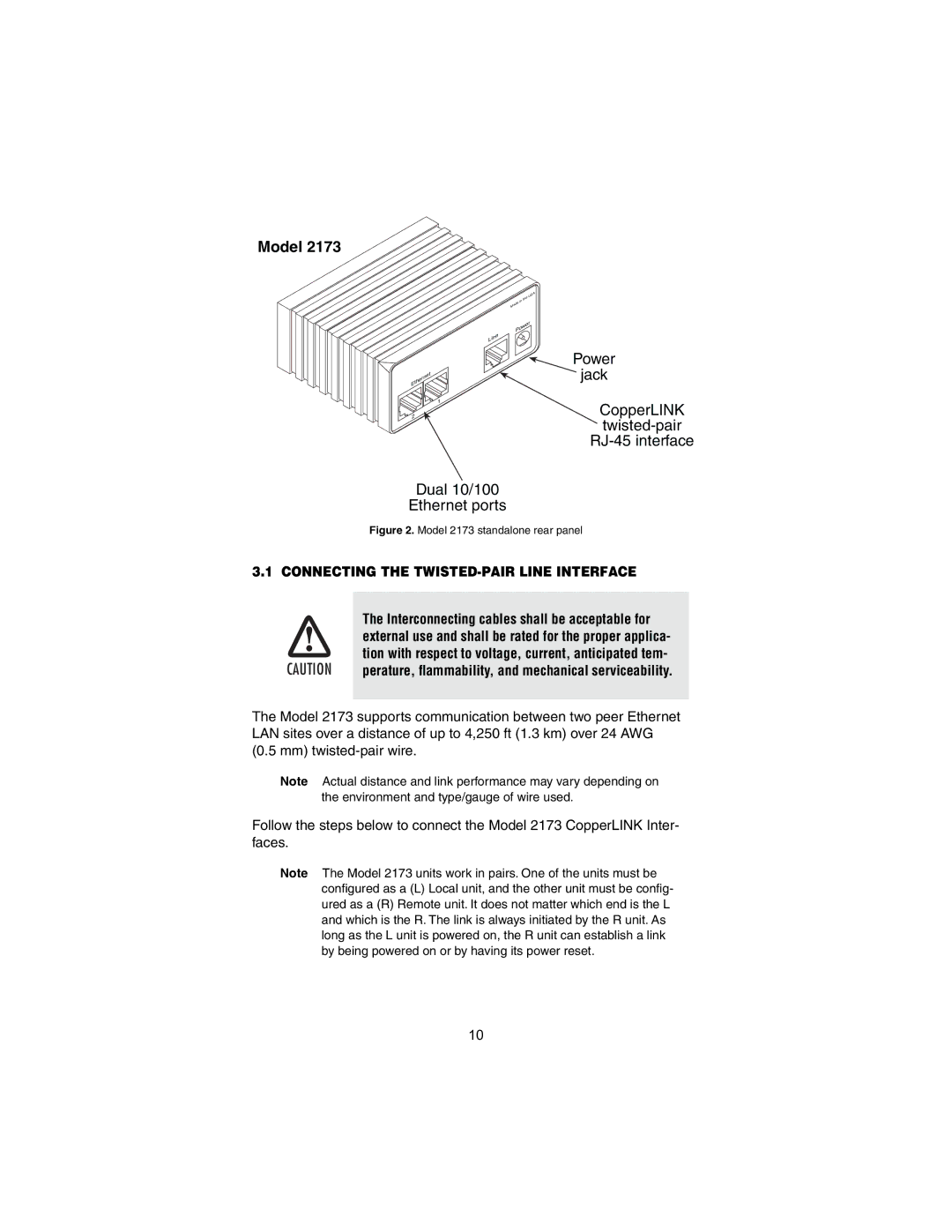2173 specifications
The Patton Electronic 2173 is a versatile and robust digital communications device designed to enable seamless connectivity in a variety of networking environments. Known for its reliability and advanced feature set, the 2173 offers businesses a solution that enhances both performance and flexibility.One of the standout features of the Patton 2173 is its support for multiple protocols. It is capable of functioning as a VoIP gateway, enabling voice over Internet Protocol services, while also supporting legacy analog phone systems. This dual capability allows organizations to bridge the gap between traditional telephony and modern IP-based communications, ensuring that businesses can migrate to new technologies without losing their existing investments.
In terms of connectivity, the Patton 2173 offers various interfaces, including FXS (Foreign Exchange Station) ports and FXO (Foreign Exchange Office) ports, which facilitate the integration of both analog and digital phones. This flexibility is particularly valuable for small to medium-sized businesses looking to optimize their communication infrastructure without extensive overhauls.
The device also incorporates advanced signal processing technology, which enhances voice quality by minimizing latency and jitter. This is crucial in ensuring clear and uninterrupted communication, especially in environments where high call traffic is managed. Moreover, the Patton 2173 supports echo cancellation and noise reduction features, further elevating voice clarity during calls.
User-friendliness is another integral aspect of the Patton 2173. With a web-based graphical interface, configuration and management are straightforward, even for those with limited technical expertise. This ease of use extends to its monitoring capabilities, where administrators can keep track of call performance and system health via an intuitive dashboard.
Security is a top concern in today’s digital communication landscape, and the Patton 2173 does not disappoint. It offers various security features, such as SRTP (Secure Real-Time Transport Protocol) and TLS (Transport Layer Security) encryption to safeguard voice data against potential threats.
The build quality of the Patton 2173 is industrial-grade, ensuring its longevity even in demanding environments. It is designed to support a variety of operating temperatures, making it suitable for deployment in diverse settings.
In summary, the Patton Electronic 2173 is a powerful communication device that combines flexibility, advanced technology, and user-friendly features, making it an ideal choice for organizations looking to enhance their voice communication systems while embracing modern networking solutions.

